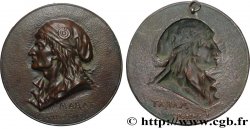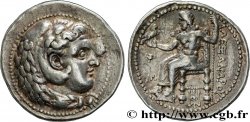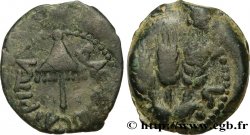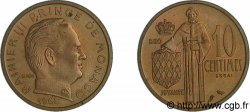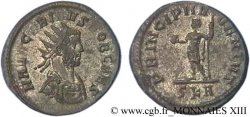E-auction 644-652989 - fme_1051993 - CONVENCION NACIONAL Médaille, Marat
Usted debe firmar y ser un comprador aprobado para pujar, Inicia sesión para pujar. Las cuentas están sujetas a la aprobación y el proceso de aprobación se alcanzan dentro de las 48 horas. No espere hasta el día en una venta se cierra el registro.Al hacer una oferta en este artículo usted está firmando un contrato jurídicamente vinculante para comprar este artículo y haga clic en «oferta» constituye una aceptación de los términos de uso de e-auctions de cgb.fr.
La subasta debe ser colocado en euros enteros cantidades venta only.The se cerrará en el momento en la descripción del artículo, no se ejecutarán las ofertas recibidas en el sitio después de la hora de cierre. Veces Transmition pueden variar y las ofertas pueden ser rechazadas si espera a los últimos segundos. Para más información envie el FAQ.
SIN GASTOS PARA LOS COMPRADORES.
SIN GASTOS PARA LOS COMPRADORES.
| Valoración : | 10 € |
| Precio : | 1 € |
| Oferta más alta : | 2 € |
| Fecha de fin de la venta : | 18 agosto 2025 20:50:40 |
| participantes : | 1 participante |
Tipo : Médaille, Marat
Fecha: n.d.
Metal: cobre
Diámetro: 27 mm
Eje de acuñación: 12 h.
Peso: 8,70 g.
Canto: lisse
Cuño: sans poinçon
Comentarios sobre el estado de conservación:
Jolie patine marron hétérogène. Présence de traces d’oxydation, de rayures, de taches noires, d’usure sur les reliefs et de marques de manipulation notamment sur l’avers. De légers coups sont présents sur la tranche. Le revers présente des concrétions vertes et un ajout de matière (reste d’attache de bouton probablement)
Anverso
Titulatura del anverso: MARAT - 1746--1793.
Descripción del anverso: Buste de profil à gauche .
Reverso
Titulatura del reverso: LISSE.
Comentario
Jean-Paul Marat, né le 24 mai 1743 à Boudry (Principauté de Neuchâtel) et mort le 13 juillet 1793 à Paris, est un médecin, physicien, journaliste et homme politique français d’origine prussienne. Usurpateur de noblesse avant la chute du régime monarchique, il devient député montagnard à la Convention à l’époque de la Révolution. Il joue un rôle de premier plan dans les premières années de la Révolution, grâce à son journal, L'Ami du peuple. Fréquemment accusé d'inciter à la violence, il est l'un des principaux instigateurs des Massacres de Septembre.
Son assassinat par Charlotte Corday permet aux hébertistes et aux robespierristes de faire de lui un martyr de la Révolution, d'installer pendant quelques mois ses restes au Panthéon et de justifier la Terreur.(c.f.Wikipédia).
Jean-Paul Marat, born May 24, 1743 in Boudry (Principality of Neuchâtel) and died July 13, 1793 in Paris, was a French doctor, physicist, journalist, and politician of Prussian origin. A nobility usurper before the fall of the monarchical regime, he became a Montagnard deputy to the Convention at the time of the Revolution. He played a leading role in the early years of the Revolution, thanks to his newspaper, L'Ami du peuple. Frequently accused of inciting violence, he was one of the main instigators of the September Massacres. His assassination by Charlotte Corday allowed the Hébertists and Robespierrists to make him a martyr of the Revolution, to install his remains in the Panthéon for a few months, and to justify the Terror. (cf. Wikipedia)
Son assassinat par Charlotte Corday permet aux hébertistes et aux robespierristes de faire de lui un martyr de la Révolution, d'installer pendant quelques mois ses restes au Panthéon et de justifier la Terreur.(c.f.Wikipédia).
Jean-Paul Marat, born May 24, 1743 in Boudry (Principality of Neuchâtel) and died July 13, 1793 in Paris, was a French doctor, physicist, journalist, and politician of Prussian origin. A nobility usurper before the fall of the monarchical regime, he became a Montagnard deputy to the Convention at the time of the Revolution. He played a leading role in the early years of the Revolution, thanks to his newspaper, L'Ami du peuple. Frequently accused of inciting violence, he was one of the main instigators of the September Massacres. His assassination by Charlotte Corday allowed the Hébertists and Robespierrists to make him a martyr of the Revolution, to install his remains in the Panthéon for a few months, and to justify the Terror. (cf. Wikipedia)








 Informar de un error
Informar de un error Imprimir la página
Imprimir la página Comparte mi selección
Comparte mi selección Haz una pregunta
Haz una pregunta Consignar / vender
Consignar / vender
 Descriptivo
Descriptivo



